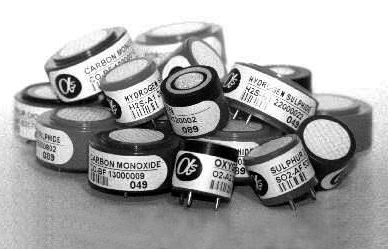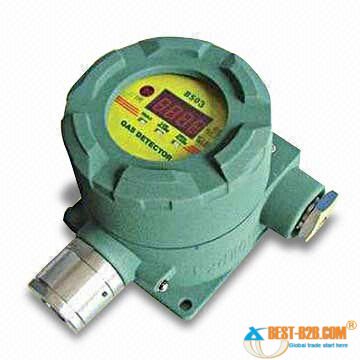Whether they are used to detect methane gas in mines, carbon monoxide in homes, or combustibles in nuclear plants, gas detectors are now an integral part of home, commercial, and industrial safety. Understanding this technology is imperative in selecting the most appropriate detector for a designated location.
Detectors are manufactured as either fixed or portable units depending on their application. Fixed units are typically installed near the processing and control areas of a factory. These units are usually interfaced with a larger protection system to improve the efficiency of response time through automatic shutdown of hazardous areas. Portable gas detectors are ideal for first-responder safety and in other situations where a fixed system is unavailable: inspecting post-fire sites, underground utilities, sewers, etc.
More importantly, detectors are classified by the type of gas they detect, combustible or toxic, and secondly by the technology they employ. Electrochemical and metal oxide semiconductor technologies detect toxic gases such as cyanogen, chlorine, and hydrogen cyanide; meanwhile, catalytic and infrared sensors detect combustible gases such as hydrocarbons. Gas detectors serve the same function regardless of type.
Metal oxide semiconductors
Metal oxide semiconductors (MOS) operate very efficiently in low-humidity ranges and are primarily used for sensing toxic gases. The units contain a gas-sensitive film, made of either tin or tungsten oxides, that reacts when deadly levels of gases are present. MOS detectors are commonly used to sense deadly carbon monoxide accumulations in homes and public spaces.
Electrochemical
Another common toxic gas detection technology uses electrochemical sensors to catch the presence of carbon monoxide, chlorine, and nitrogen oxide. These sensor feature a series of electrodes made from a porous hydrophobic membrane, fixed atop a high surface area precious metal, through which only the targeted gas can diffuse. Once the gas has diffused through membrane, it is oxidized at the electrode and the resulting electrochemical reaction or current is measured.

Catalytic sensor
Catalytic gas detectors use catalytic oxidation for gas-sensing endeavors. These sensors the most common form of gas detector and are based on the principle that gas produces heat when it oxidizes. The oxidation results from the gas coming into contact with a catalytic surface, and the released heat then alters the resistance of the platinum treated wire coil sensor. This heating initiates a resistance change in the sensor that is then converted by a bridge-type circuit to a sensor signal relative to the gas concentration.

Catalytic detectors are less sensitive to humidity, condensation and changes in pressure.
Catalytic detectors are easy to install, simple to operate, and have long life spans. The technology is more reliable than infrared gas sensors because it doesn’t rely on optics to sense gas; for this reason, catalytic sensors are ideal in dusty environments.
Infrared sensors
Infrared detectors rely on optics to calculate the absorption of infrared radiation as it passes through a gas volume. A system of transmitters and receivers produces and monitors a constant infrared light stream; the system is alarmed whenever gas interferes with the optical pathway of the light. A dual-beam detection system measures the intensity of a wavelength at absorption and outside of it. The relative differences between the two wavelengths are compared to determine the presence of gas.
Unlike catalytic sensors, infrared sensors do not require oxygen to function. These sensors do not degenerate in the presence of too much gas; they will continue to show accurate readings no matter what.
Visit TechXchange to discuss evolution of gas detection.
Advertisement
Learn more about Digi-Key





